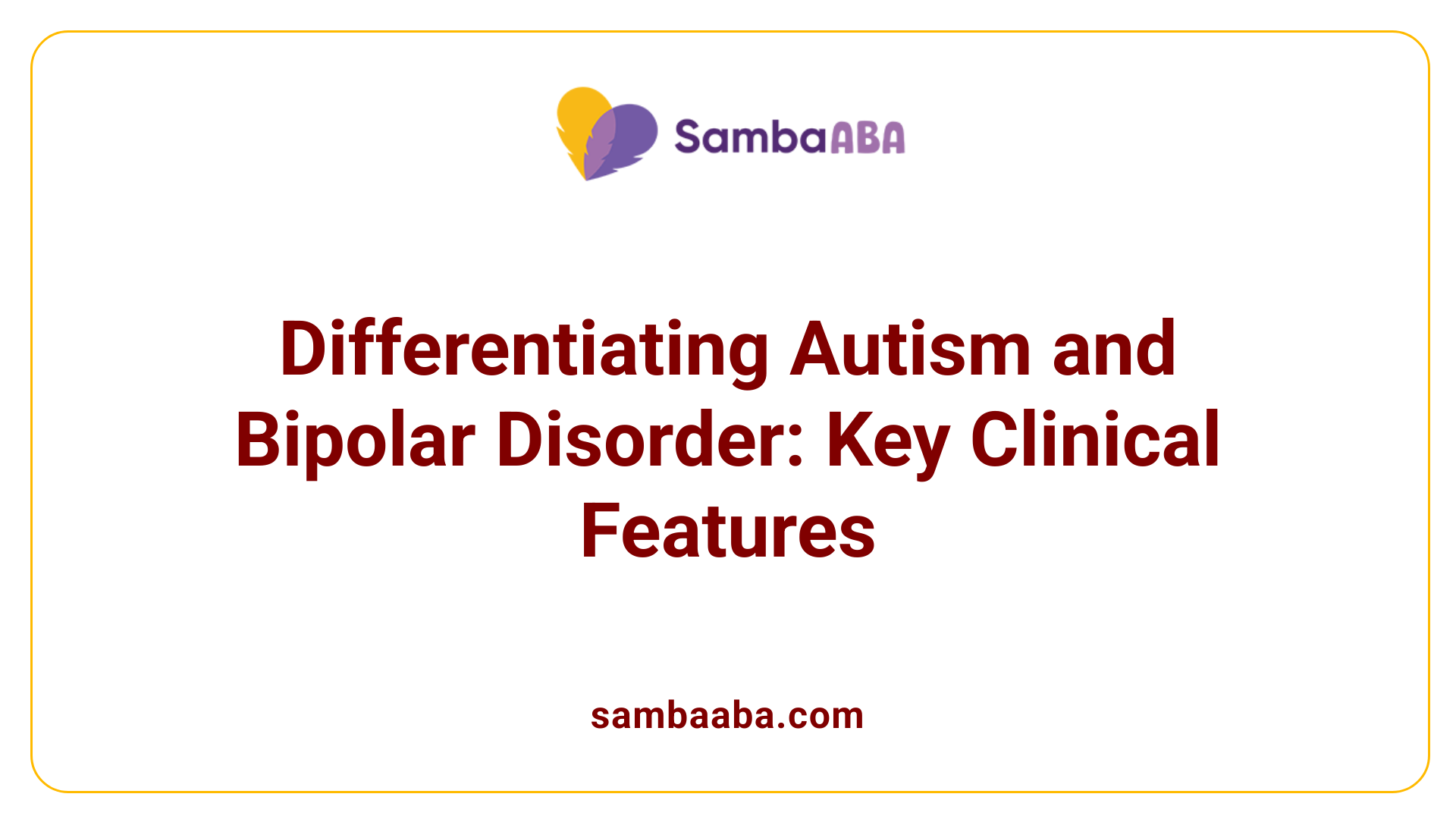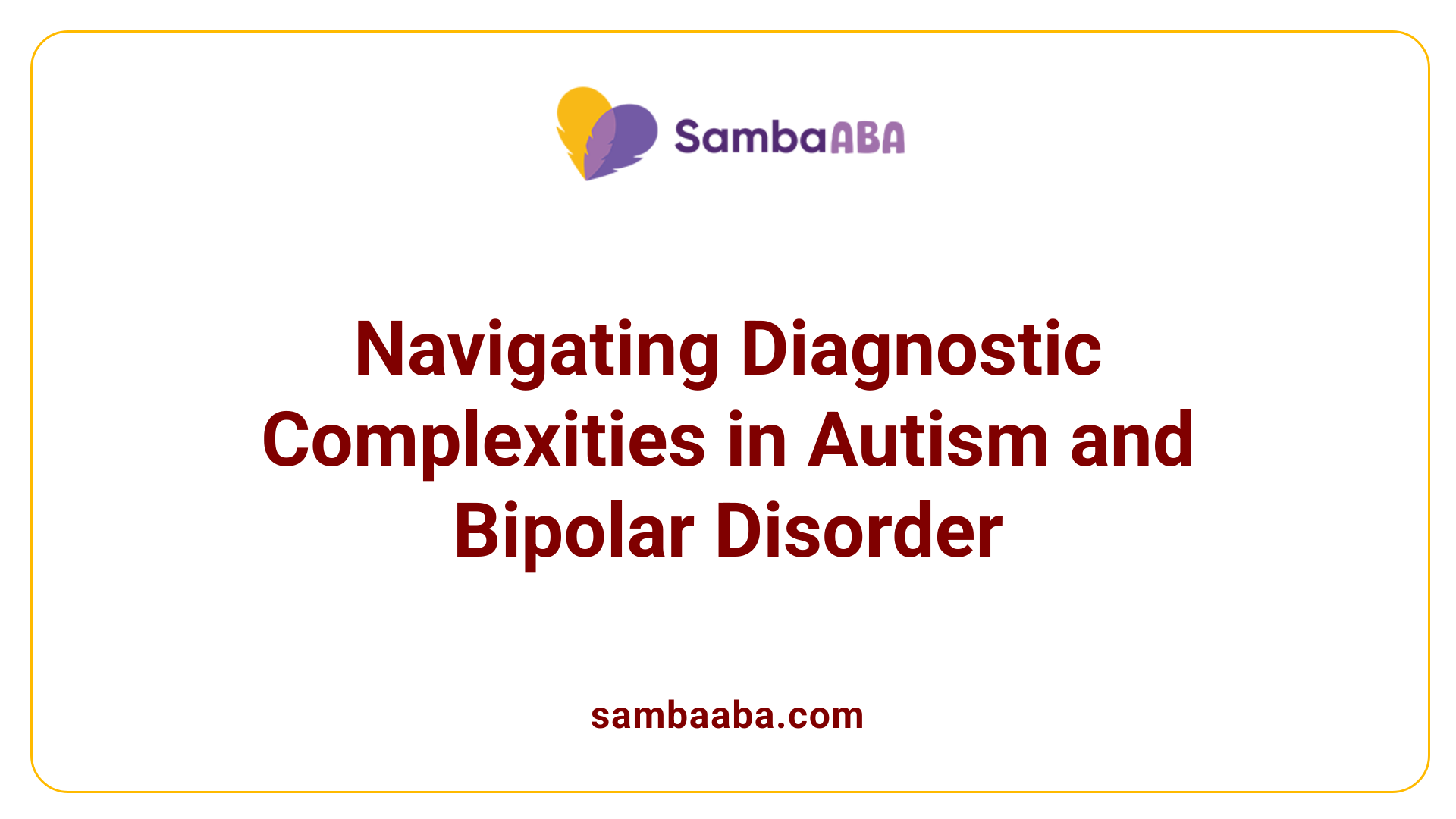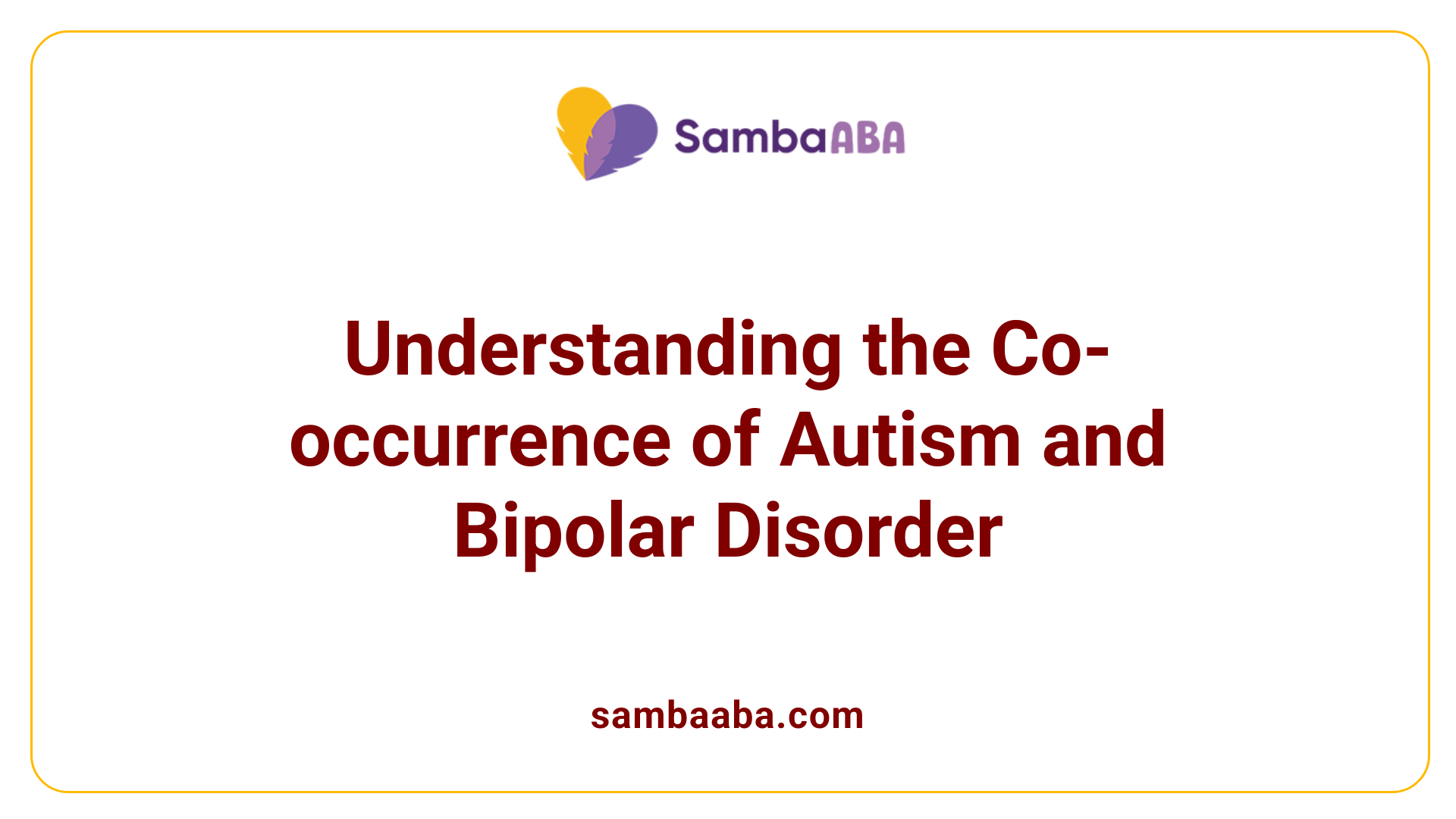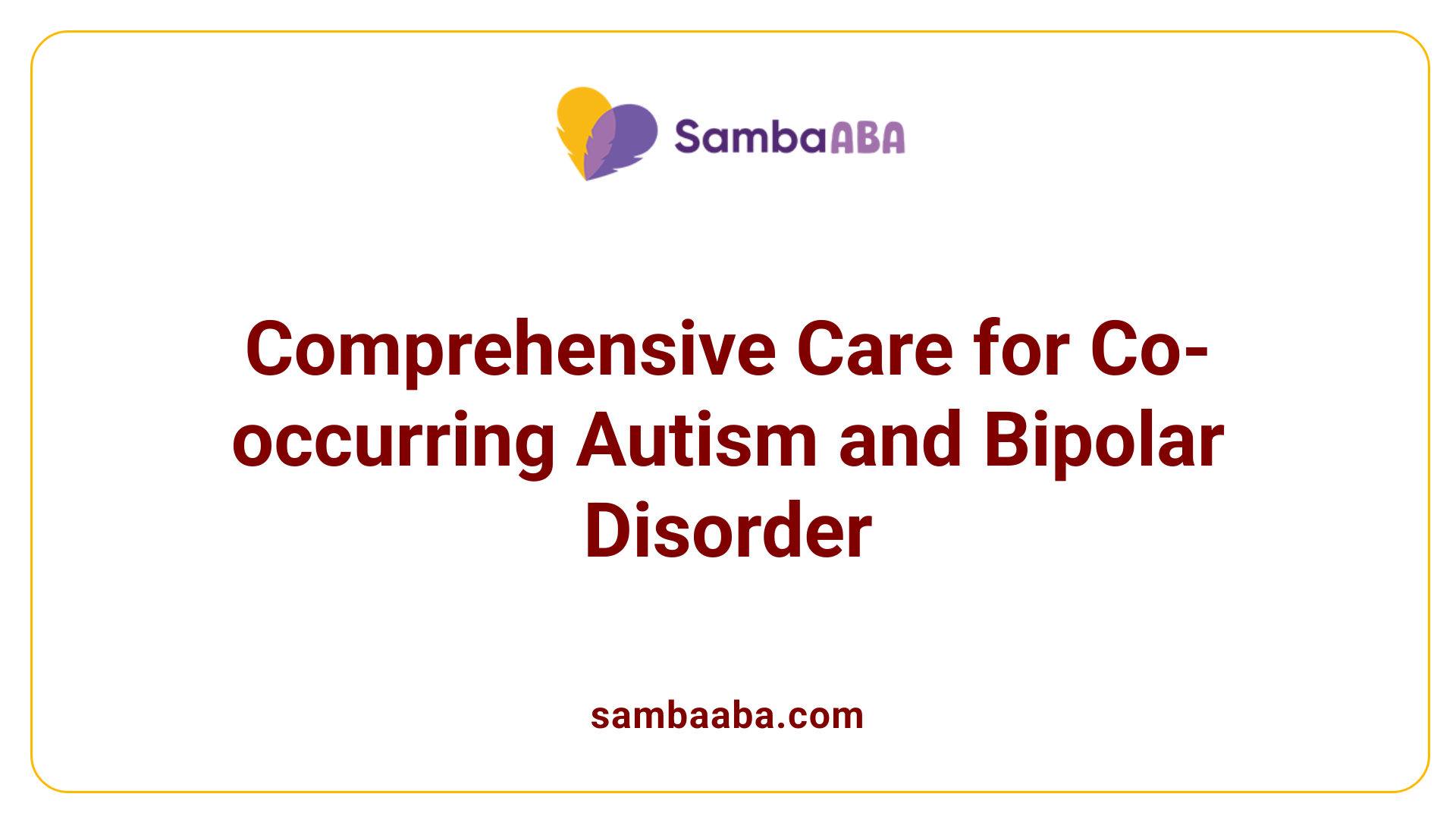Autism and Bipolar Disorder
Understanding the Complex Relationship Between Autism and Bipolar Disorder
Exploring the Overlap and Distinctions in Clinical Features
Autism Spectrum Disorder (ASD) and bipolar disorder are two distinct mental health conditions that frequently intersect, complicating diagnosis and treatment. While autism is a neurodevelopmental disorder present from early childhood, bipolar disorder typically manifests during adolescence or early adulthood, characterized by episodes of mania and depression. Recent studies reveal a significant prevalence of co-occurrence, with estimates suggesting that up to 27% of individuals with autism exhibit symptoms of bipolar disorder. This article examines the symptoms, diagnosis challenges, genetic links, prevalence data, and treatment considerations to foster better understanding and management of these complex conditions.
Symptoms and Overlapping Behavioral Traits
Autism and bipolar disorder each have distinct symptoms, but they also share some behavioral traits that can complicate diagnosis.
In autism spectrum disorder (ASD), individuals often exhibit difficulties with social communication, including challenges understanding social cues, expressing themselves, and forming relationships. Repetitive behaviors, such as hand-flapping or insistence on routines, are common. Focused interests that are intense and unwavering also characterize autism. Many autistic individuals experience hyperactivity, heightened sensory sensitivities, and sleep disturbances, which can impact daily functioning.
Bipolar disorder displays symptoms characterized by significant mood shifts. During manic episodes, individuals may show elevated or irritably heightened mood, impulsivity, rapid speech, decreased need for sleep, and engaging in risky behaviors. Depressive episodes feature feelings of sadness, fatigue, decreased interest in activities, and cognitive difficulties like trouble concentrating.
When autism and bipolar disorder occur together, symptoms may manifest as abrupt mood changes, irritability, agitation, sleep disruptions, and hyperactivity. These overlapping signs can make it challenging to differentiate between the two conditions, especially since autistic behaviors such as irritability and hyperactivity can also appear during mood episodes.
Research indicates that autistic individuals are at an increased risk for developing bipolar disorder, often with earlier onset and more severe symptomatology. Recognizing the nuanced presentation of symptoms is crucial for clinicians to correctly diagnose and tailor treatment strategies. Understanding both shared and unique behavioral traits helps in managing co-occurring autism and bipolar disorder effectively.
Distinctive Clinical Presentation and Diagnostic Challenges

What distinguishes autism from bipolar disorder in clinical presentation?
Autism Spectrum Disorder (ASD) and bipolar disorder exhibit distinct features, although some symptoms may overlap. Autism primarily involves persistent difficulties with social communication, restricted and repetitive behaviors, and sensory sensitivities that typically become evident in early childhood. These core traits include challenges in forming social relationships, specific ongoing interests, and behaviors such as stimming that are present from a young age.
In contrast, bipolar disorder is characterized by episodic mood changes, including periods of mania or hypomania and depression. These mood swings usually begin in adolescence or early adulthood and are marked by behaviors such as heightened energy, impulsivity, rapid speech, and significant emotional shifts.
Despite these differences, symptoms like irritability, sleep disturbances, and hyperactivity are common in both conditions, complicating diagnosis. For example, irritability can be a feature of both autism and bipolar episodes. However, in autism, behaviors tend to be consistent and lifelong, while bipolar episodes are episodic, with periods of normal mood in between.
Diagnosing bipolar disorder in someone with autism poses additional challenges. Communication impairments especially hinder clear expression of mood states, and overlapping behaviors may lead clinicians to misattribute mood symptoms to autism. Also, since autism appears early and is present from a young age, its features differ from the episodic nature of bipolar disorder.
Timely and careful assessment that considers the onset age, symptom persistence, and severity helps clinicians distinguish between these conditions. Recognizing that autism-related behaviors are typically stable over time and that bipolar episodes involve distinctive mood states with associated symptoms allows for more accurate diagnosis and tailored treatment strategies.
Genetic and Biological Links Between Autism and Bipolar Disorder
Autism spectrum disorder (ASD) and bipolar disorder are connected through various shared genetic and neurobiological factors. Research has shown that certain gene expression patterns, especially in astrocytes and synaptic functioning, are common to both conditions. Studies suggest that in individuals with autism, there is often suppression of genes related to synaptic activity, which might contribute to neurodevelopmental differences. Interestingly, some gene loci, such as neurexins and neuroligins, which are crucial for synaptic formation and plasticity, have been implicated in both autism and bipolar disorder.
Family studies further support this genetic link. Relatives of autistic individuals tend to have higher incidences of bipolar disorder, indicating a familial aggregation of these conditions. This suggests that inherited genetic vulnerabilities may predispose individuals to both disorders.
Neuroimaging research adds another layer of evidence, highlighting overlapping brain regions involved in social cognition, emotional regulation, and neuroplasticity. Certain gene variants, especially copy number variants, are associated with structural and functional brain differences seen in both autism and bipolar disorder.
Mechanistically, these shared genetic factors influence neurodevelopmental pathways that govern brain growth, synaptic connectivity, and plasticity. Disruptions in these pathways may lead to the atypical neural circuitry observed in both conditions, contributing to their overlapping symptoms and high comorbidity.
Overall, understanding these genetic and neurobiological overlaps not only explains why autism and bipolar disorder can co-occur but also underscores the importance of integrated approaches for diagnosis and personalized treatment.
Challenges in Diagnosis and the Importance of Accurate Identification

What are the challenges in diagnosing autism and bipolar disorder together?
Diagnosing autism and bipolar disorder simultaneously presents significant difficulties, primarily because many symptoms overlap. For instance, behaviors such as irritability, mood swings, impulsivity, sleep disturbances, and agitation can be attributed to either condition, making it hard for clinicians to differentiate between them. Communication challenges common in autism, including language impairments, further complicate the detection of episodic mood changes characteristic of bipolar disorder.
Autistic individuals often display behaviors like repetitive routines and social withdrawal, which may either mask or mimic mood episodes, leading to potential misdiagnosis or missed diagnoses. The episodic nature of bipolar symptoms—such as mania or depression—can be concealed within the more persistent behavioral patterns of autism.
Adding to the complexity, some assessment tools designed for mood disorders may not be suitable for individuals with autism, especially those with intellectual disabilities or sensory sensitivities. This necessitates careful, expert clinical evaluation, emphasizing symptom onset, duration, and severity.
In summary, the intertwined presentation of symptoms, communication barriers, and limitations of standard diagnostic procedures make the recognition of co-occurring autism and bipolar disorder especially challenging. Accurate identification relies on experienced clinicians who analyze nuanced behavioral patterns and history, ensuring appropriate treatment strategies are implemented.
Prevalence, Comorbidity, and Epidemiological Data
 The co-occurrence of autism spectrum disorder (ASD) and bipolar disorder is more common than previously thought, with studies estimating that approximately 7% to 8% of autistic individuals also have bipolar disorder. When looking at the broader population, the prevalence in adults is slightly higher, with about 7.5% to 10% of autistic adults affected, markedly above the roughly 1% rate seen in the general population. Some research reports even higher figures; for example, certain samples of autistic children show prevalence rates as high as 27% for bipolar symptoms.
The co-occurrence of autism spectrum disorder (ASD) and bipolar disorder is more common than previously thought, with studies estimating that approximately 7% to 8% of autistic individuals also have bipolar disorder. When looking at the broader population, the prevalence in adults is slightly higher, with about 7.5% to 10% of autistic adults affected, markedly above the roughly 1% rate seen in the general population. Some research reports even higher figures; for example, certain samples of autistic children show prevalence rates as high as 27% for bipolar symptoms.
The age-related prevalence indicates a higher occurrence in adults, especially among those with psychosis. The risk factors include a family history of mood disorders and genetic predisposition, suggesting shared genetic links between autism and bipolar disorder. Studies also reveal that youth with autism and bipolar disorder tend to show symptoms earlier, with some cases diagnosed during adolescence.
Recent summaries, such as analyses from the Autism Speaks Autism Treatment Network, highlight that around 5% to 8% of individuals with autism spectrum disorder are diagnosed with bipolar disorder. These figures underline the necessity for clinicians to be vigilant, as overlapping symptoms like irritability, mood swings, hyperactivity, sleep disturbances, and agitation can make accurate diagnosis challenging.
In summary, bipolar disorder is notably more prevalent among autistic populations, particularly high-functioning individuals and adults. The high comorbidity rate emphasizes the importance of thorough assessment strategies to ensure appropriate treatment and support.
Treatment Strategies and Management Approaches

Are there any treatment considerations for individuals with both autism and bipolar disorder?
Treating individuals with co-occurring autism and bipolar disorder requires a careful, individualized approach. Since symptoms often overlap, such as irritability, impulsivity, and sleep disturbances, a multidisciplinary team is essential to accurately assess and develop an effective treatment plan.
Pharmacological treatments typically involve mood stabilizers like valproic acid and lithium, as well as atypical antipsychotics such as risperidone and aripiprazole. These medications can help manage mood swings, irritability, and aggression. However, close monitoring for side effects like weight gain, diabetes, or toxicity is crucial, especially since autistic individuals may be more sensitive to medication effects.
Complementing medication, behavioral and psychotherapeutic interventions play a vital role. Approaches such as cognitive-behavioral therapy (CBT), social skills training, and behavior management strategies can improve emotional regulation and social interactions. Family support and education are also critical components, helping caregivers understand and manage complex behaviors.
Diagnosing bipolar disorder in someone with autism can be particularly challenging due to overlapping symptoms and communication difficulties. Therefore, assessment by professionals experienced in both conditions is necessary to ensure accurate diagnosis.
In sum, the management of autism with bipolar disorder involves tailored medication plans, supportive therapies, and family involvement—coordinated by a team of specialists—to optimize outcomes and improve quality of life.
Looking Ahead for Better Diagnosis and Care
Understanding the nuanced relationship between autism and bipolar disorder is essential for accurate diagnosis and effective treatment. Ongoing research into shared genetics, neurobiological pathways, and tailored therapeutic approaches offers hope for improved management and quality of life for individuals affected by both conditions. Clinicians, families, and patients must work collaboratively, emphasizing early detection, specialized interventions, and comprehensive support systems. As awareness increases and diagnostic tools evolve, there is a promising future where the complexities of autism and bipolar disorder are adequately addressed—minimizing misdiagnosis and optimizing outcomes.
References
- Autism and Bipolar disorder
- Bipolar disorder - National Autistic Society
- Autism and the Risk of Bipolar Disorder
- Navigating the intersection between autism spectrum disorderr and ...
- Bipolar Disorder and ASD - Massachusetts General Hospital
- Occurrence of psychosis and bipolar disorder in adults with autism
- Understanding Autism and Bipolar Disorder - Verywell Mind
- Autism Spectrum Disorder in a Patient with Bipolar Disorder and Its ...
